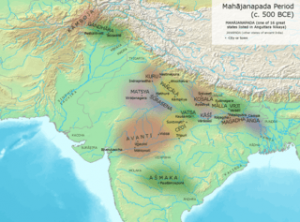About Greater Magadha

Greater Magadha is a concept in the early historiography of India. It is used to refer to the political and cultural sphere that developed in the lower Gangetic plains during the Vedic age. The name derives from the kingdom of Magadha that later arose in this region. The culture of Greater Magadha developed separately from the orthodox śrauta culture that was characteristic of the upper Gangetic basin to its west. The concept was developed by the indologist Johannes Bronkhorst in his work Greater Magadha: Studies in the Culture of Early India, where he defines the region to comprise modern day Bihar and easter Uttar Pradesh. According to Jeffrey D. Long, although the inhabitants of Greater Magadha revered the same deities as the srauta Brahmins, they developed an ideological opposition to the ritual slaying and sacrifice of animals, even going so far as to regard all violence as undesirable in the path towards liberation.










